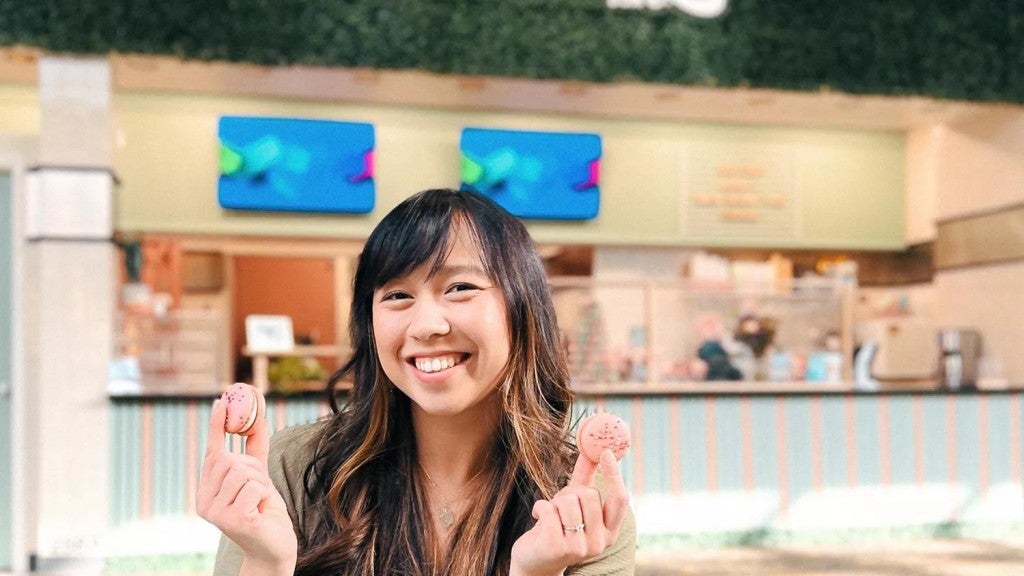The positive impacts of arts education for students of all ages have long been acknowledged—improved engagement, setting goals for higher education, and cognitive empathy, to name a few.1
However, access to arts education is often limited: The students who could benefit the most from it are often the least likely to receive it.2
“Studies have shown that art is a way to enhance the educational experience—to engage students, encourage them to persist, and help set them upon the path to financial security that they wish to walk,” says Jo Christine Miles, director of Principal Foundation®. “Art is also known to create community, which is something all students need to foster growth and help them become productive community members.”
To expand those pathways, Principal Foundation has funded a collaboration between the Des Moines Art Center and the Des Moines, Iowa-based By Degrees Foundation. Called My Voice, the partnership took place during the 2021–2022 and 2022-2023 school years.
Supporting students through arts education
The By Degrees Foundation, which works with public schools on the city’s north side, selected 12 elementary, middle, and high school students each year to participate in the My Voice cohort. Arts educators from the Art Center developed a curriculum on how to view, discuss, and critique art, intended to help develop critical thinking and vocabulary skills. “Art can inspire us,” says Mia Buch, Des Moines Art Center museum educator. “This program really allowed the curiosity of these students to shine in the things they care about.”
The students made multiple visits to the Art Center for tours with an arts educator. As a capstone project, each student selected a work from the museum’s permanent collection and responded with original artwork of their own. “Throughout this process I learned many new skills and information about my background,” says Karla, an eighth-grade student who participated in My Voice. The piece she created “influences my future artworks by telling a story, not just a big idea, but what’s behind it.”
Building community through art
Statistics demonstrate the value of arts education to students—and those benefits extend far beyond schoolhouse walls. Support for the arts unifies communities, boosts local economies and businesses, and sparks innovation.3
“Art is a universal language,” Miles says. “Pick a country, pick a time period, pick a piece of art, and you will see something, learn something, and understand something.”
The arts at Principal®
Nearly a century ago, Principal Financial Group® recognized the importance of art in everyday life. In the 1930s, it used art to reach diverse audiences and to promote cultural awareness and employee participation in the arts. Its program was formalized in 1985 by then Principal CEO John Taylor and now includes more than 700 contemporary works by both established and emerging artists from around the world, as well as employee volunteer docents. The program functions as yet another piece of Principal culture, demonstrating a commitment to diversity in thought.
Two different events every autumn offer ways to help you celebrate the importance of the arts.
The week beginning with the second Sunday in September is National Arts in Education Week. In 2023, the celebration is September 10-16.
October is National Arts & Humanities Month, a country-wide recognition of the importance of culture in the United States.
Principal Foundation funding for My Voice extended to include the publication of four Art Center video “toolboxes” for educators, parents, and students. The topics include what to expect when visiting a museum, how to prepare for a museum visit with small children, and how to invite curiosity into the museum experience.
The efforts fit neatly into the wide-ranging support that Principal Foundation provides across the globe for basic needs, financial literacy and health, and the arts. “Art brings people together physically—at galleries, museums, performance spaces—and culturally, through its capacity to tell a community’s shared story, to inspire reflection, and form connections that transcend differences,” Miles says.
For students, the impact extended beyond the classroom. “I loved My Voice,” says Eh, a ninth grade student. “It made me proud of my work, my family loved my piece, and [it] made me happy. I also loved seeing artists from different backgrounds come together because of art.”



